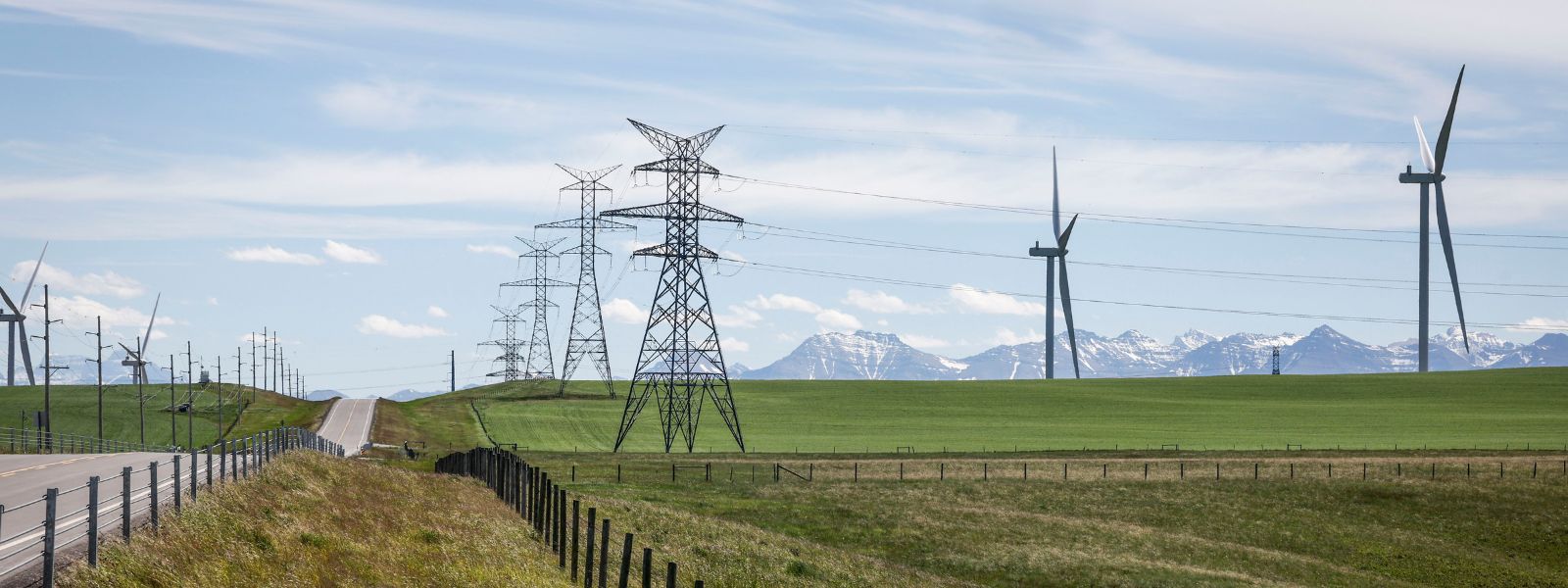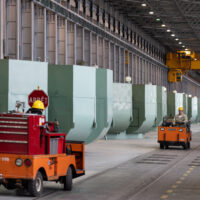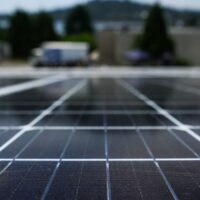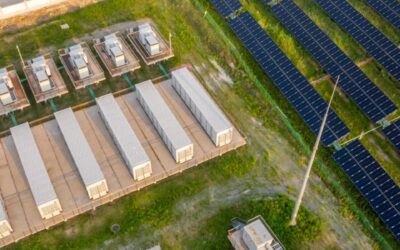Canada is running low on electricity, just as industries gear up for growth. Industrial demand is surging, and provinces are under pressure to boost supply without driving up rates. And at the same time, economic security has shot up the priority list of governments across Canada, as the Trump administration has blown up the current North American (and global) trade regime.
The need for ‘nation-building projects’ has captured the attention of national discussion, with electricity infrastructure near the top of the list. In the medium-term, building new electricity transmission could unlock both growth and decarbonization.
In the meantime, Canadian provinces have an underutilized but readily available source of cheap electricity at their fingertips. Provincial electricity grids across the country are connected to one another through a series of interties that exchange electricity. However, these interties are not operating at their full potential, especially between Western provinces.
Improving inter-provincial electricity trade can help keep electricity prices low and strengthen supply, just as provinces face mounting needs to shore up their economies. The same improvements could provide clean, reliable, and cost-effective energy within just a few years. Indeed, addressing the structural barriers that limit the use of existing interties is a prerequisite for enabling even greater electricity trade through new transmission lines.
Interprovincial electricity trade makes sense
Enabling provinces to share power more effectively also helps with energy affordability and grid reliability. Some provinces, such as British Columbia and Manitoba, are flush with low-emitting flexible power from hydro electricity. Alberta and Saskatchewan, by contrast, have plentiful low-cost wind and solar, but they must often let it go unused when it cannot be immediately consumed or stored. Sharing power across provincial borders could help balance the variability of renewables, reduce wasted energy, and lower overall system costs—ultimately easing electricity prices for customers in all regions involved.
Not only that, but interconnections act as critical insurance during local power station outages or extreme weather—as Alberta saw last year.
Overall, the benefits are significant. Natural Resources Canada’s 2018 regional study established intertie projects between B.C. and Alberta, and Manitoba and Saskatchewan as win-win, delivering both annual financial and emissions savings. More recent analysis quantified the net savings for consumers from the full use of the existing B.C.-Alberta intertie at around $150 million per year.
Current grid connections aren’t even close to running at their full potential
So why aren’t provinces using their existing grid connections to their full capacity?
Progress depends on tackling some of the deeper structural and regulatory issues at play. Without doing so, any future progress building a bigger east-west grid also risks underperforming—just as the B.C.-Alberta intertie has for much of the past two decades.
Today, the B.C.-Alberta intertie is only using roughly half its designed 1,200 megawatt (MW) capacity for electricity flowing into Alberta. The Alberta operator restricts the inward flow of electrons as a precaution for reliability, in case of a problem on the intertie. But engineering solutions to the problem have existed for over a decade and are relatively low cost compared to the benefit (or indeed the cost of new transmission).
Obligations and agreements to return the intertie to its built capacity date back as far as 2007. Three successive B.C. premiers have called for its restoration and most recently the Alberta government asked the system operator (AESO) to file an upgrade application by the end of 2026.
B.C. and Alberta aren’t alone in their issues managing interconnections. Further east, Saskatchewan (via SaskPower’s trading subsidiary) lodged a complaint with the Canada Energy Regulator in 2023 over the operation of the 350 MW Manitoba-Saskatchewan intertie. They alleged that U.S. customers were being prioritized over Saskatchewan in times of limited supply. In April 2025, Manitoba cancelled U.S. contracts and announced it would redirect surplus hydro exports toward Saskatchewan instead of the U.S., reversing years of friction.
A deeper look at these cases shows that misaligned incentives leave high‑value wires running half empty.
Current electricity system rules and incentives are holding back progress
Linking two neighbouring markets creates visible winners and losers among generators even as electricity customers on both sides of the border benefit. That’s because, while connecting systems lowers overall electricity costs, it generates greater pricing competition, affecting how much generators can earn. Alberta operates an energy-only market where incumbent gas generators rely heavily on peak pricing for their financial viability. They gain much of their revenue from sales during periods of high demand. On the other hand, B.C.’s flexible hydroelectric power can also shift generation to those same hours and sell competitively-priced electricity to Alberta consumers.
Existing gas-fired plants have further issues with trading more power east-west. Suncor—the Canadian energy company best known for its oil sands operations—also runs natural‑gas cogeneration plants that feed electricity into Alberta’s power grid. In a complaint to Alberta’s utility regulator last year, Suncor argued local generators must always be available when called upon, while suppliers from outside the province can sell only when prices are high. Suncor says this creates an unfair advantage for out-of-province producers.
That said, some Alberta generators, particularly renewable energy producers, benefit from the intertie. As renewable generation increases in Alberta and electricity demand ramps up in B.C. this benefit is likely to increase.
Alberta’s abundant wind resources, superior solar potential, relatively low land costs and open market have spurred some of the lowest cost renewables in the country. But as things stand, Alberta’s wind and solar producers often can’t deliver all their available electricity through Alberta’s wires. In 2024, renewable generators had their output reduced or turned off during about 45 per cent of the hours in the year. Connecting Alberta’s renewable generators to B.C.’s grid increases their options for potential sales, and could reduce the amount of supply currently wasted.
The B.C.-Alberta intertie also delivers free reliability support for Alberta’s renewables generators and grid. B.C.’s hydro plants naturally provide inertia for Alberta’s grid, effectively acting like shock absorbers when there are unexpected shifts or sudden outages. Without the intertie, Alberta’s system operator or renewable generators would need to source additional stability services locally. This leads B.C. to argue they are uncompensated for underwriting their neighbours’ grid stability. Other regions, such as the UK, have established markets that recognize and pay for inertia.
Overall, current incentives encourage each province to manage the flow of electrons in their own best interest, ignoring the implications for their neighbour. Absent a third party, shared planning or formalized agreement, unilateral decisions can dictate the final outcome. One side can choose to turn down the tap, and even choose to prioritize other connections.
North-south electricity trade has been prioritized over east-west
Inter-provincial interties also compete with larger, more profitable north-south interties with the U.S. Dealing with the U.S. has long been attractive: Canada’s hydro provinces have some of the most flexible power on the North American grid and are well connected north-south, providing ample opportunity for trade. These sales to the U.S. benefit Canadian ratepayers. Manitoba Hydro noted their exports kept Manitoban rates 20 per cent lower than they would otherwise be. Likewise, profits from BC Hydro’s trading subsidiary flow through to B.C. customers. Powerex earned net $2.5 billion over the last five years, the majority of which came from U.S. trade.
North-south sales to the U.S. have been so attractive that connections east and west have played second fiddle. This underpinned Saskatchewan’s 2023 complaint (serving the U.S. first when Manitoba had a dry year).
The U.S. market is well connected with the Canadian provinces and this trade will remain important in the long term, but for the moment the balance is shifting.
Regional cooperation works abroad—Canada can make it work here
So, how can provinces overcome these hurdles to greater inter-provincial trade of electricity?
Both Australia and the U.S. rely on neutral regional transmission operators to manage dispatch, and ensure the efficient operation of inter-state transmission lines. Absent regional operators, Canada has work to do on regional planning, coordination, and incentivising fair operation of interties. The Canada Energy Regulator (CER) could offer some support and adjudication in this regard.
Even where transmission operators stop at borders, other countries have found ways to support cross-border trade. The EU, for example, has an interconnection target of least 15 per cent by 2030 to encourage member countries to interconnect their installed electricity production capacity. Consumers in Europe already benefit from an estimated €34 billion in annual savings afforded by the internal trade in electricity. Solid ‘seams agreements’—which are contract agreements between different electricity markets—can also be negotiated. This happens in the U.S. where two regional transmission operators meet.
Australia and Europe follow a ‘beneficiary pays’ principle to share costs for upgrades and new infrastructure. Those who benefit, contribute more. If a project is in the European interest but not paid for by the national benefits, then the EU picks up some of the tab. In Canada, neutral parties such as the CER and the federal government could play an important role in establishing cost-sharing processes and/or providing targeted financial support to accelerate upgrades.
It’s time to ramp up interprovincial electricity trade
Restoring the B.C.-Alberta intertie to its original designed capacity is a quick win that can free up electricity supply while helping consumer rates and reliability. Addressing this issue will become increasingly important as industrial demand continues to rise, and new long‑distance lines will not arrive before 2030.
The current political environment and economic benefits favour greater electricity trade between provinces, but there is work to do to make this a reality including better aligning incentives and forging agreements across systems and jurisdictions to keep electrons flowing. Planning and coordination of interties must catch up both to enhance the operation of the grid of today, and for the emerging east-west grid of tomorrow.







